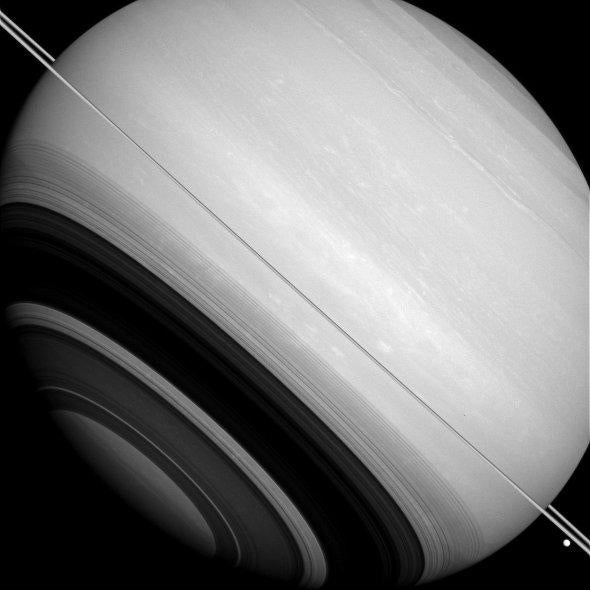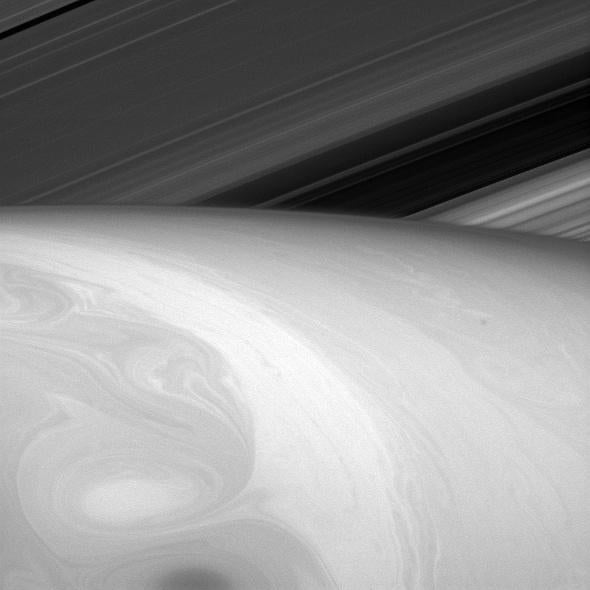I’m thankful for a lot of things in life—though appreciative might be a better word—but if I had to assess a list of astronomical gifts, then Saturn would be very high on that list.
This ridiculously gaudy bauble of the solar system never ceases to amaze me, filling my sciencey brain with wonder as it overwhelms my artsy brain with beauty.
So just to get you kick-started for Thanksgiving, here are three portraits of Saturn for which we can all be grateful.
Up first: Rings and shadows.

Photo by NASA/JPL-Caltech/Space Science Institute
This image, taken by the Cassini spacecraft in Aug. 14, 2014, shows nearly the entire face of the planet. That’s no small feat, given Saturn’s 116,000 kilometer girth.
Cassini was almost directly above Saturn’s equator when it took this, so the rings, similarly latituded, are seen as a narrow ribbon around the planet. But that’s an illusion of perspective; the rings are 270,000 km across, a huge span. That’s revealed by their shadow on Saturn’s southern hemisphere—a series of concentric arcs darkening the cloud tops.
I like how different rings cast darker or lighter shadows. The inner C ring is sparse, but the main B ring is thick and broad. The A ring, outside of B, is slightly less dense, so the shadow is lighter. The gap between them is called the Cassini Division, and since there’s less stuff there, it appears as a bright band on Saturn (it doesn’t cast a shadow, really). You can also see the Encke division, the very narrow strip near the bottom of A’s shadow. The shadows are like the rings in reverse, both in brightness and order.
By the way, did you spot the moons Tethys (off to the right) and Mimas (just above the rings, to the lower right of center)?
Next up: Light and shadowplay.
Cooool. The images making up the video, taken by Hubble, are from 1995, when Saturn’s tilt brought the Sun shining almost directly along the plane of the rings. That’s how the moons (Enceladus, Mimas, Dione, and Tethys) can cast long shadows on them. The video shows about 9½ hours in the life of moons, and you can see just how far they move in that short time, tugged by Saturn’s immense gravity.
Finally: Intermix.

Photo by NASA/JPL-Caltech/Space Science Institute
This spectacular shot threw me for a moment. I had never see the clouds on Saturn mixing like that before; usually they stay separate. But this is an image taken using a filter that only allows red light through, where methane absorbs light. That means you’re seeing the very top of the clouds, where mixing of winds is more common. That vortex appears to be drawing material from the bright band next to it. It’s a good reminder that air is a fluid—literally, something that can flow.
Perhaps it’s a bit odd of me to be thinking of Saturn on a day like today, but you know what? I’ll take odd, if it means being able to appreciate the intense and wondrous beauty of the natural world … or worlds.